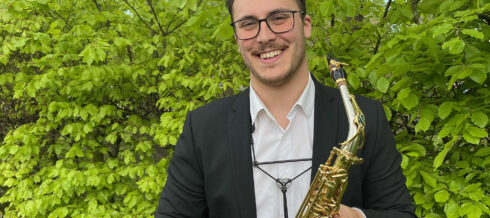Soloist Concert – Mario Romero Madrid, saxophone

Mario Romero Madrid studies saxophone at the soloist programme at RAMA.
In tonight’s concert we will review some of the most important works in the classical saxophone repertoire. We will travel from the beginning of the 20th century to the end of the same century, so we will have the opportunity to appreciate the different aesthetic and technical changes that the repertoire for this instrument has undergone.
Jacques Ibert: “Concertino da Camera” (1935)
The “Concertino da camera”for alto Saxophone and eleven instruments was written by Jacques Ibert in 1935. Ibert dedicated the work to saxophone virtuous Sigurd Raschèr. The work is in two movements; the first, Allegro con moto, is lively and technically challenging and the second begins with a lyrical Larghetto, featuring soaring lines in the saxophone’s upper register. A short cadenza links to the movement’s concluding Animato molto. The concerto is distinctive for its large range requiring the use of the saxophone’s top-tones. The piece shares similarities with his concerto for flute.
Alfred Desenclos: “Prelude, Cadenze et Finale” (1956)
This piece was composed by Alfred Desenclos in 1956. This piece was commissioned by Paris Conservatoire for the end-of-year academic competition (what nowadays would be a Bachelor recital). The composer conceived this piece as a suite in three movements without interruption.
William Albright: “Sonata” (1984)
William Albright’s Sonata for Alto Saxophone and Piano amply demonstrates the stylistic eclecticism for which he is famous. The four movements exhibit distinct characters and musical languages, including references to compositional practices of the past, as in the two-part invention of the first movement and the follia of the second, and allusions to American popular music, as in the bebop sections of the finale.
Aya Tominaga, piano
The concert is free, and you can just show up without a ticket. Please come early.
